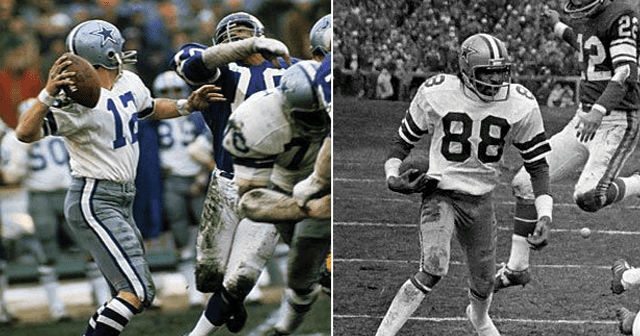One of the most well known terms and iconic plays in sports, the “Hail Mary” is a last second desperation play.
It’s not the only iconic play in sports though with a Catholic name, though.
After the first Hail Mary by legendary Hall of Fame Quarterback Roger Staubach for a game winning touchdown in 1975, a far more controversial play happened. So infamous, it’s been called the “Immaculate Deception,” paying homage to the famous Immaculate Reception play in 1972.
It was a warm and humid day on September 10th in 1978. The Oakland Raiders were facing the San Diego Chargers in San Diego, CA for the start of the NFL season:
“With 10 seconds left in the game, the Raiders had possession of the ball at the Chargers’ 14-yard line, trailing 20–14. Raiders quarterback Ken Stabler took the snap and found himself about to be sacked by Chargers linebacker Woodrow Lowe on the 24-yard line. The ball came out of Stabler’s hands and moved forward towards the Chargers’ goal line. Raiders running back Pete Banaszak appeared to try to recover the ball on the 12-yard line, but did not keep his footing, and pitched the ball with both hands even closer to the end zone. Raiders tight end Dave Casper was the next player to reach the ball but he also seemingly could not get a handle on it. He batted and kicked the ball into the end zone, where he fell on it for the game-tying touchdown as time ran out. With the ensuing extra point by placekicker Errol Mann, the Raiders won 21–20.” – CC BY-SA 3.0 via Wikimedia Foundation
The fumble should have been ruled a forward pass, and the NFL amended the rules in the offseason to restrict the offense from advancing fumbles.
Chargers fans immediately responded by wearing shirts that said “Immaculate Deception” depicting a blindfolded referee.
Had the Chargers won the game, they would have have made the playoffs that season and had a chance at the winning super bowl.


















It seems to me the play has been ill named – there was no “deception” in the play at all. Had the play been designed to have the quarter back “throw” a backward pass – and then intentionally fumble forward – then perhaps – I could see calling the play “The Immaculate Deception” – but the fact that it was a fumble, or in this case a missed call – incomplete pass – ruled a fumble, and not a designed play – where do they come up with “deception”? On another note – the NFL made a good decision adding the rule that a team cannot fumble into the end zone for a touch down.